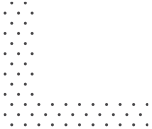How inspired are your students to engage in future sustainability action?
How effective were the components of this kit?
Please provide 2+ examples of student voice on the kit's impact on them
Sorry we left for term break before I asked this but here is some independent writing from two of my ākonga, Year 2. Waitatarua Reserve is a special place because there are sea creatures. We are cleaning the Waiatarua Reserve because the sea creatures might die. Waiatarua Reserve is a special community. Waiatarua Reserve is so beautiful to look at. We walked to Waiatarua Reserve because we went to pick up rubbish. We are keeping the sea rubbish free for the sea creatures. We picked up plastic so the sea creatures do not eat the plastic. We are good at it. We are kaitiaki. We are resilient at that. By Ishita Waiatarua is a special place in the community because it is a place for New Zealand's native birds to build nests. At Waiatarua Reserve we did a big clean up so it wouldn't harm the animals. We were being a kaitiaki at Waiatarua Reserve. Waiatarua Reserve is our turangawaewae the place where we stand. Waiatarua Reserve is an important place for birds to live in. Waiatarua Reserve used to be a fresh water river then suddenly Mt Wellington erupted with bursting lava flowing into Waiatarua Reserve to form a fresh water lake. Waiatarua Reserve became a wetland. Waiatarua Reserve got cleaned by the sea cleaners. Waiatarua Reserve is a special place to all animals. At Waiatarua Reserve it is a special place for everyone. By Dante
Which kit components were the most impactful and why?
The actual walk was very beneficial, as so often we learn from inside the classroom walls. This was kaitiakitanga in action! We loved learning about waterways and the NZ creatures that live in them.
How many bags of rubbish did your class collect?
We took all the bags but they were not filled to the tippy top. Refer to photo.
How has this kit impacted your class culture toward whenua ora (land wellness) and sustainability?
We spend a lot of time in Rūma Tahi connecting to the local area, as this is my jam! Looking at whenua ora was another complimentary dimension to our turangawaewae understanding. As you can see from their writing the ākonga felt the 'bigness' of the problem.
What is the legacy this kit will leave behind on your learners?
I loved that the trainee Community Constables came with us for our walks and were interacting with the community for a very positive reason. The ākonga are far more self aware of their own actions and littering. They will now notice if any lunch litter is left after eating times and may even call each other out about it. The ākonga attend a Sustainability specialised class as part of their weekly programme. They are very excited to bring this new knowledge back to me and make connections in the classroom. This programme also encourages litter awareness and an understanding of NZ waterways. Our school is looking at how we could keep up the momentum of this learning and walk to clean up other local areas. We have washed gloves and RAMS at the ready.
How high was student engagement throughout this kit?
What was the latitude and longitude of your clean up? (from Sea Cleaners poster)
36°53'02.5"S 174°49'41.5"E
What was your cleanup location type?
Reserve
Which of the following types did your class collect?
Food Wrappers
What was the most interesting piece of rubbish found and why?
We found a massive collection of items wedged in a hedge. Illegal dumping - the cane basket with a large paint tin inside and so on. Some of it was from freedom campers - the beer box, European food boxes. We were counting the rather large amount of dry wet wipes. It wasn't until my colleague explained about wet wipe washes (and hadn't I ever done it before??) that I became grossed out about what I was handling. I am not easily grossed out. We used our lunch rubbish to make the art!

